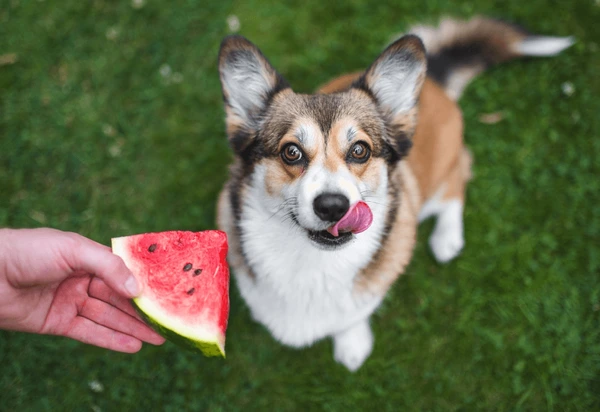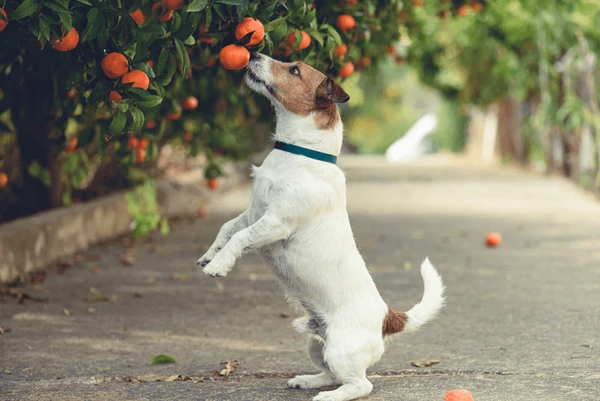-
Kutchina service center, Kolkata - 700010
Kutchina service center, Kolkata - 700010

Wondering which fruits are safe and healthy for your furry friend? This expert guide from a reputable Pet Clinic explains how to safely introduce fruits for dogs, their nutritional benefits, portion control tips, and which fruits to avoid for a balanced and happy pet life.
As a responsible pet parent, you’ve probably wondered what human foods are safe for your furry friend. Among all food categories, fruits stand out as a colorful, nutrient-rich choice—but are all fruits safe for dogs? Understanding which ones help and which ones harm is essential for your dog’s long-term health and happiness.
This comprehensive guide helps you explore the safest fruits for dogs, how much to feed, and which fruits to avoid. Let’s uncover how these natural treats can boost your pet’s wellness when introduced correctly.
Dogs are primarily carnivores but thrive best on a balanced diet that includes carbohydrates, fiber, and vitamins. Fruits can serve as natural supplements that add antioxidants, hydration, and minerals—without relying on artificial treats.
However, not every fruit is safe. Some contain toxins or excessive sugars that can lead to digestive distress or serious health conditions. So, knowing the difference between beneficial and harmful fruits is crucial.
Adding fruits to your dog’s diet has numerous benefits when done mindfully:
These benefits show why fruits for dogs can be an excellent occasional addition to their meals.

While fruits should never replace your dog’s main diet, the following options are considered safe and healthy in moderate quantities.
Apples are rich in vitamin A, C, and fiber. Remove seeds and the core before feeding to avoid cyanide toxicity. Slice thinly and serve fresh.
Benefits:
Bananas are soft, easy to digest, and full of potassium. They make excellent treats but should be fed in small amounts due to their high sugar content.
Benefits:
Watermelon keeps dogs hydrated and is packed with vitamins A, B6, and C. Always remove seeds and rind before serving.
Benefits:
Strawberries are antioxidant-rich and help whiten teeth naturally. Feed in moderation as they contain natural sugar.
Benefits:
In small portions, pineapple provides manganese, vitamin C, and digestive enzymes that enhance nutrient absorption. Avoid the tough skin and core.
Benefits:
Pears are loaded with vitamin K, copper, and fiber. Remove seeds and the stem before serving.
Benefits:
Citrus fruits like oranges can be beneficial if given sparingly. They’re full of vitamin C but can upset sensitive stomachs if overfed.
Benefits:
Peaches (without the pit) make a juicy treat full of fiber and antioxidants. Avoid canned peaches due to added syrup.
Benefits:
Not all fruits are safe. Some contain compounds that can be toxic or harmful to your dog’s body.
Avoid the following fruits completely:
Even small amounts of these fruits can be dangerous, so it’s better to stay cautious.

Introducing fruits for dogs requires patience and observation. Follow these safe steps:
A gradual introduction helps prevent stomach upset and ensures your pet enjoys fruits safely.
Even healthy fruits can lead to obesity if overfed. Use them as 10% or less of your dog’s total calorie intake.
Moderation helps maintain weight balance and prevents sugar-related issues like diabetes.
While most dogs enjoy fruits, they aren’t suitable in all circumstances. Avoid fruit snacks if your dog:
Always consult a professional before introducing any new food, especially if your dog has a medical condition.
Organic, pesticide-free fruits are always the best choice for your dog’s health. Seasonal fruits retain higher nutrition and fewer chemicals, ensuring your dog benefits from nature’s freshness.
If unsure, consult professionals from the Best Pet Clinic in Kolkata to identify what suits your pet’s dietary needs best.
Avoid these common errors when giving fruits to dogs:
Mindful feeding makes a major difference in your dog’s long-term health.

1. Can I give my dog fruits every day?
Only in moderation. Use fruits as occasional treats, not as a daily diet replacement.
2. Are fruit peels safe for dogs?
No, peels often contain pesticides and can cause digestive issues. Always remove them.
3. Can puppies eat fruits?
Yes, but in very small amounts. Start with mild fruits like apple or banana.
4. Which fruit helps improve a dog’s coat?
Blueberries and apples are great for skin and coat health due to antioxidants.
5. What should I do if my dog eats a toxic fruit?
Contact a veterinarian immediately. Early treatment can prevent serious complications.
Feeding fruits to your dog can be both joyful and beneficial when done responsibly. Remember that your dog’s nutrition thrives on balance—too much of even a good thing can become harmful. Observing reactions, keeping portions small, and choosing the right fruits can make all the difference.
If you ever feel unsure, consulting experts can help tailor your pet’s diet safely.
Caring for your pet’s diet means caring for their happiness. Fruits for dogs, when chosen wisely, offer natural nutrition that strengthens both health and heart. Whether it’s a crunchy apple or a refreshing slice of watermelon, a mindful choice today ensures a longer, healthier life for your furry friend.